Table of contents
Who is the Orixá Oxóssi?
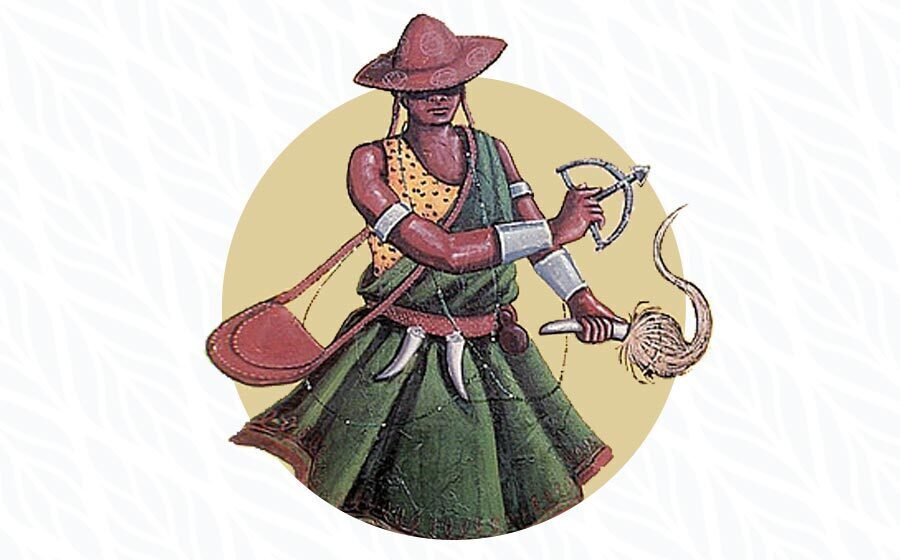
Oxóssi is the King of Keto, of the forests, the warrior with only one arrow who never misses. Intelligent, fast, communicative and connected to the ancestors, he is the hunter and protector of the forests. With a strong relation to many Brazilian myths, he is one of the best known in the country.
With a fascinating history, Oxóssi goes through many legends that bring out his best characteristics. Know some of them, their syncretism in various religions and the various qualities of this Orixá. See also the characteristics of the children of Oxóssi, how to relate to him, prayer and offerings to the Saint.
The story of Oxóssi
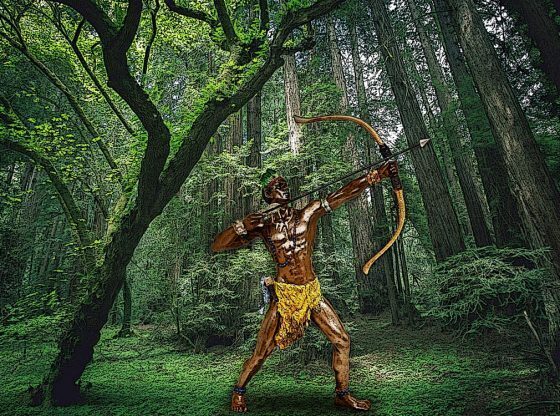
Son of Iemanjá - Lady of the salty waters - and Oxalá - the Orixá of Orixas, Oxóssi is the god of hunting and of the forests. Known as the warrior of one arrow, he has as symbol his Ofá, which is a bow and arrow, as well as the Eruexim, which is also used by Iansã.
With small differences between Candomblé and Umbanda, he is one of the Orixás present in both religions, having an interesting origin and a history full of complex situations - having even dressed as a woman for a long time, to be able to date Oxum hidden from his father. Learn more about this powerful Orixá!
Oxóssi in Umbanda
In Umbanda, there is a very large mixture of beliefs, forming a strong syncretism with Christianity. For this reason, Oxóssi is also related to Saints, being three in total, as they are associated in different ways in some parts of Brazil.
For Umbanda, Oxóssi is related to hunting and forests, being himself the manifestation of a greater force. He works with spirituality through entities and phalanxes, which under his command, act in charity and fraternity. He is the patron of the caboclo line, so well known even by those who are not familiar with Umbanda.
Oxóssi in Candomblé
Candomblé is more purist in terms of its belief system and does not syncretize with other religions. It carries in itself a large cultural load and its own pantheon, involving more Orixás, which are often merged into one in Umbanda.
Oxóssi (Òsóòsi) in Candomblé is Odé, King of Keto (Alakétu), Lord of the hunt, of the forest and of abundance. Also called Oníìlé, he was the one who found the best place to install a village, with the best hunts, he had another denomination, Olúaiyé, Lord of humanity and abundance.
The origin of Oxóssi
In candomblé, Oxóssi is the son of Apaoká, the jackfruit tree - which is actually an Iyá-Mi, an ancestral mother figure, fixed in the form of a tree that provides sustenance, nutrition and protection, through its fruits, leaves and trunk. Therefore, this Orixá knows magic with plants, besides its association with Ossaim.
For Umbanda, Oxóssi is the son of Iemanjá and Oxalá, but there are stories that say he is the son of Oduduá, brother of Oxalá and first husband of Iemanjá. Brother of Ogum and Exu, both represent movement, each one in its own way.
An Itã tells that he left his mother's arms and went to the forest. Worried, Iemanjá sent Ogum - her warrior son - in search of him. When Ogum found Oxóssi, he had already become Lord of the forests and hunting, so when he returned to Iemanjá, he recommended that she leave him there, that he would be very well. His mother trusted his word and let Oxóssi leave.
Single Arrow Hunter
Oxóssi is a single arrow hunter, because he never misses. Perfectionist, slightly transgressor, very intelligent and full of energy, he acts in the certainty of victory and when he points his arrow, conquest is guaranteed. Patron of hunters who seek the sustenance of the house, he is today the guardian of those who work to provide for their families, whether through hunting or not.
An Itã tells us that after a bountiful season of hunting and harvesting, everyone was celebrating, but the Ìyamì Òsóróngà sorceresses were not happy not to receive their offering. They sent a bird that with evil cries, destroyed and set fire to everything.
Then Osotadotá, with 50 arrows, missed them all. Next came Osotogi, with 40, and Osotogum with 20, both missed. Then came Òsotokànsosó, who hit his only arrow, and was acclaimed by the population as Oxóssi, the people's hunter.
The lord of the woods and forests
A born hunter and connoisseur of the arts of Ossain and his herbs, Oxóssi is the Lord of the woods and forests. He helps protect not only the game from those who have usury, but also the hunter, bringing the daily food to his table, thus being associated with prosperity and daily work, whatever it may be.
Another Itã tells that Oxóssi and Ogum lived under the care of Iemanjá, one hunting and the other cultivating. One day, a diviner said that Oxóssi was not to hunt anymore, for he would be caught in a trap and he did not listen. That is how Ossaim captured and imprisoned him, causing him to lose his memory.
Ogum went out in search of him and when he returned with his brother, Iemanjá did not receive him, for having disobeyed her orders. Oxóssi went to live in the forest and, upset with Iabá, Ogum went to live on the roads. Iemanjá was so sad that, with so many tears, she turned into the sea.
Oxóssi and Oxum
Oxóssi and Oxum have an intense, short and very interesting story that portrays well the dating archetypes of both Orixás. Oxum's beauty, intelligence and grace made all Orixás fall in love with her, and Oxóssi did not escape the list.
However, in order to be able to date Oxum, who was protected by his father, Oxóssi had to dress up as a woman and thus spent a good amount of time in Oxum's kingdom. However, she became pregnant and it became difficult to maintain the disguise. Oxóssi returned to the forest and they had Logunedé, Lord of fishing and hunting, as he spent 6 months with his mother in the rivers and the other 6 months hunting with his father in the forests.
The syncretism of Oxóssi
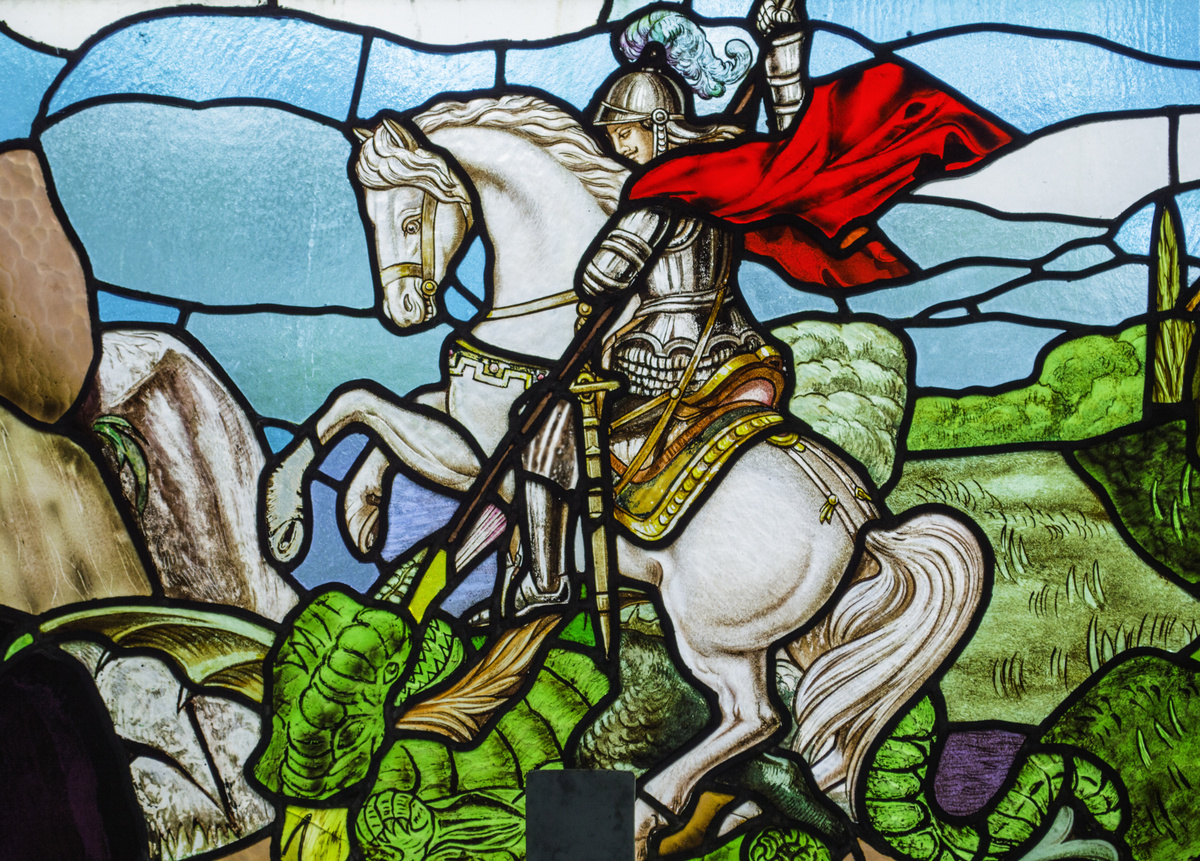
As in other pantheons, African deities have strong syncretism with other religions. The best known is with the Catholic Church, where Oxóssi is seen either as Saint George, Saint Sebastian or Saint Michael, depending on the place. There are also Celtic, Greek and other associations. Get to know each one.
Saint George for the Catholics of Bahia
In Bahia, Oxóssi is Saint George, the warrior saint, but for most of the rest of the country, this saint syncretizes with his brother, Ogum. Although Oxóssi is best known as a hunter, he also helped protect his city by learning to fight with Ogum.
Moreover, he is the Orixá of survival and Saint George was tortured to death, but remained alive in the memory of his people. The saint also distributed all his wealth to the population, before being arrested, using his wisdom and converting even the wife of the king.
Saint Sebastian for the Catholics of the Southeast
Oxóssi is associated with Saint Sebastian in much of the country, being also a warrior before becoming a saint. Like Saint George, he did not deny his faith and the king, revolted, had him shot with arrows. He survived, a woman took his arrows and healed his wounds.
Oxóssi also has this persistence and recklessness, besides the warrior spirit that does not leave what he believes in behind. Therefore, there is a strong syncretism between the two.
Saint Michael for the Catholics of Pernambuco
Saint Michael the Archangel is one of the three best known, along with Gabriel and Raphael. He protects mankind and for its sake he wages war against everything that can be considered evil. Just like Oxóssi, he cherishes his own and fights for what he believes in.
Despite being known for his various Catholic syncretisms, such as Saint Sebastian in most of the country, Saint George in Bahia and Saint Michael in Pernambuco, Oxóssi always represents the one who does not give up, who protects and takes care of his own.
Cernunnos for the Celts
In the Celtic pantheon, Oxóssi is Cernunnos (Kernunnos), who together with the great Goddess, form the perfect pair, the balance. He is responsible for the abundance of crops, fertility and animals, wild or not. He is represented with deer or bull horns, evidencing his connection with nature.
Wise and powerful, he is linked to the seasons of the year and is always accompanied by animals - when not transformed into one. Oxóssi also has a strong relationship with animals and forests, thus being syncretized with this Celtic deity.
Artemis for the Greeks
Artemis is the goddess of the hunt and protector of animals, as well as Oxóssi. They are syncretized given the great similarity between their archetypes, especially with regard to personality. Full of energy and self-will, these deities are charged with initiative and action.
Both Oxóssi and Artemis are also great warriors and dominate the battlefield with their courage, strength and fighting skills.
Humbaba for the Babylonians
For the Elamite people there was a God called Terra Humba or Humbaba, who was the guardian of the forests and animals. He was the guardian of the forest of cedars, where the gods of the Babylonian pantheon lived. Because of his characteristics linked to the natural, he is syncretized with Oxóssi, the king of the forests.
Like Oxóssi, the Babylonian God Humbaba was gifted with a strong personality and feared nothing and nobody. He was a feared warrior, almost associated to a monster, given his strength and appearance, since he was formed by a mixture of several animals.
Ullr for the Nordics
In the Norse pantheon, Ullr is the god of hunting, justice, winter, and agriculture. He was born in Ydalir, belonging to the Aesir people, but because his mother married Thor, he went to live in Valhalla, but his drive for freedom drove him to sneak into the forests, frozen or not.
Ullr carried a bow and arrow and always used skis in winter, sometimes also with a shield, which he used to slide through the snow. A warrior, he protected his people and made sure that agriculture did not suffer in winter. Therefore, he is also syncretized with Oxóssi.
The qualities of Oxóssi
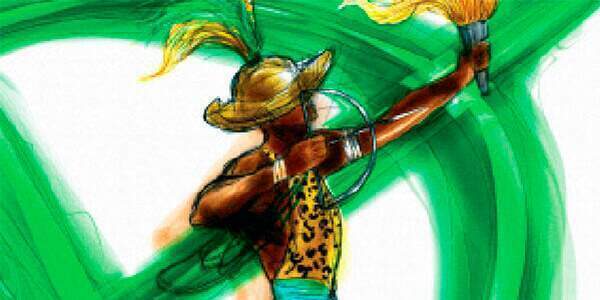
First of all, it is important to understand that qualities are a way of detailing what each irradiation of the Orixà does. In other words, it shows the various faces, with more intensity and emphasis, to direct the teaching more.
Therefore, when we talk about qualities of Oxóssi, we are talking about the various forms in which he can manifest himself, depending on the emphasis given. So, know what are the qualities of the King of the Woods and what each one represents.
Otin
Otim is a more combative quality of Oxóssi, full of dynamic energy and at the same time reserved in relationships. He has a more warlike characteristic, with great aggressiveness, presenting strong ties with his brother Ogum.
He is usually represented wearing light blue or leopard skin garments. Wherever he goes, he takes with him his capangas (mocós), which are small leather and metal bags, decorated with conch or beads, which are used to carry small provisions.
Ajenipapo
Ajenipapo is a quality of Oxóssi more connected to magic and the use of the elements of nature for healing, change and other purposes. Because of this, Ajenipapo is connected to Iyamis Osorongá, great sorcerer Mother, who holds the secret of the creation of worlds in her womb.
It is associated with one of the Itans about Oxóssi, which deals with his birth from a jackfruit tree (or Iyami). Another strong connection of this quality is with Oyá, the Orixá of the winds, Eguns and changes, which represents the strength of the warrior, independence and prosperity.
Ibualamo
More closely related to Omulu, Ibualamo is a quality of Oxóssi represented by an older Orixá, a brave hunter who visits the deepest waters. He is even seen as the father of Logunedé, as he fell in love with Oxum and dived into the deepest waters just to conquer her.
Ibualamo is represented with a sky-blue vestment, beaded in the same color. He can also be found with a helmet woven of straw and a straw skirt, associating himself even more with the Orixá Omulu, who has his body covered with a straw vestment.
Inkule
Inkule or Oni Kulé is one of the qualities of Oxóssi, being more peaceful and very prosperous. It is also called Odé of the mountains and can inhabit the plateaus when in mountains, connecting heaven and earth, spiritual and material, thus being an important intermediary.
In addition, Inkule is strongly linked to the Orixá Oxalá, the one who created human beings, having as base the clay of Nanã, being thus the Orixá of life. He is represented wearing light green or even turquoise clothes, depending on the line or Nation.
Inie
Inie is a very young and enchanting quality of Oxóssi, thus linked to Oxum, Oxaguiã (young Oxalá) and Iemanjá. In this way, Inie carries attributes such as lightness, grace, agility, intelligence and a great sense for hunting - in other words, to conquer what he wants.
Known as the elephant hunter and worshipped on the banks of the Irinlé River, Inie is fast and strong, using his agility with intelligence. He is depicted wearing the ivory from his hunts on his beaded necklace, which gives him strength and vitality.
Dana Dana
Dana Dana is a quality of Oxóssi that is more reserved, introspective and knowledgeable about the mysteries of life and beyond. He can enter and leave the forest of death, for he knows the mysteries surrounding it and has no fear of Egun - lost and denser souls.
This quality of Oxóssi is usually represented with light blue clothing, as are his beads. Dana Dana is linked to Ossaim, Orixá of the sacred leaves; Oxumaré, Orixá of the link between the worlds and prosperity; Oiá, Lady of time; and Bará, Messenger of the Orixás.
Karé
Karé is a quality of Oxóssi that has strong connection with the waters, rivaling Oxum, for having similar strengths and functions. Among them are prosperity, fertility, beauty and communication. Still, it has strong connection with Oxum and Oxalá.
He is depicted wearing a blue suit and a golden banté on top. Like Oxum, he likes to comb his hair and perfume, and is a great lover of acarajé. He is also a great hunter, although he prefers to live closer to water sources than anywhere else in the forest.
Inseewé
Inseewé or Oni Sèwè is a quality of Oxóssi, the one most connected to Ossain, Lord of the sacred leaves. Thus, he has strong ties with medicinal plants - of the body and of the soul - and lives more reclusively in the forest, close to Ossain, caring and working with his herbs.
This quality of Oxóssi is represented in light blue robes, with a less warrior, hunter air, being focused on the cultivation and care of the herbs. He also wears a straw-da-costa band and a helmet that covers almost all of his face.
Infami
Infami or Infaín Odé funfun, is a lesser known quality of Oxóssi, very closely related to the older version of Oxalá, Oxalufã. However, he also maintains ties with his younger version, Oxaguiã, reinforcing his milder and more peaceful temperament.
Connected to the Funfun Orixás, that is, the first and original ones, associated, for example, with the archangels, Infami is represented wearing only white and a necklace of white beads, interspersed with blue coral. He also likes to eat abadô, which is a food based on roasted kidney beans.
Akueran
Akueran is one of the qualities of Oxóssi and is related to prosperity and abundance, bringing to his children many opportunities for achievement. He lives in the most hidden areas of the forest and likes raw food.
Linked to Oxumaré and Ossain, he is related to the connection between the worlds, prosperity and the mastery of the sacred leaves. He is represented with light blue robes, composed of red stripes. Akueran's guide is composed of light blue beads and peacock, parrot and macaw feathers also represent him.
Characteristics of the sons and daughters of Oxóssi
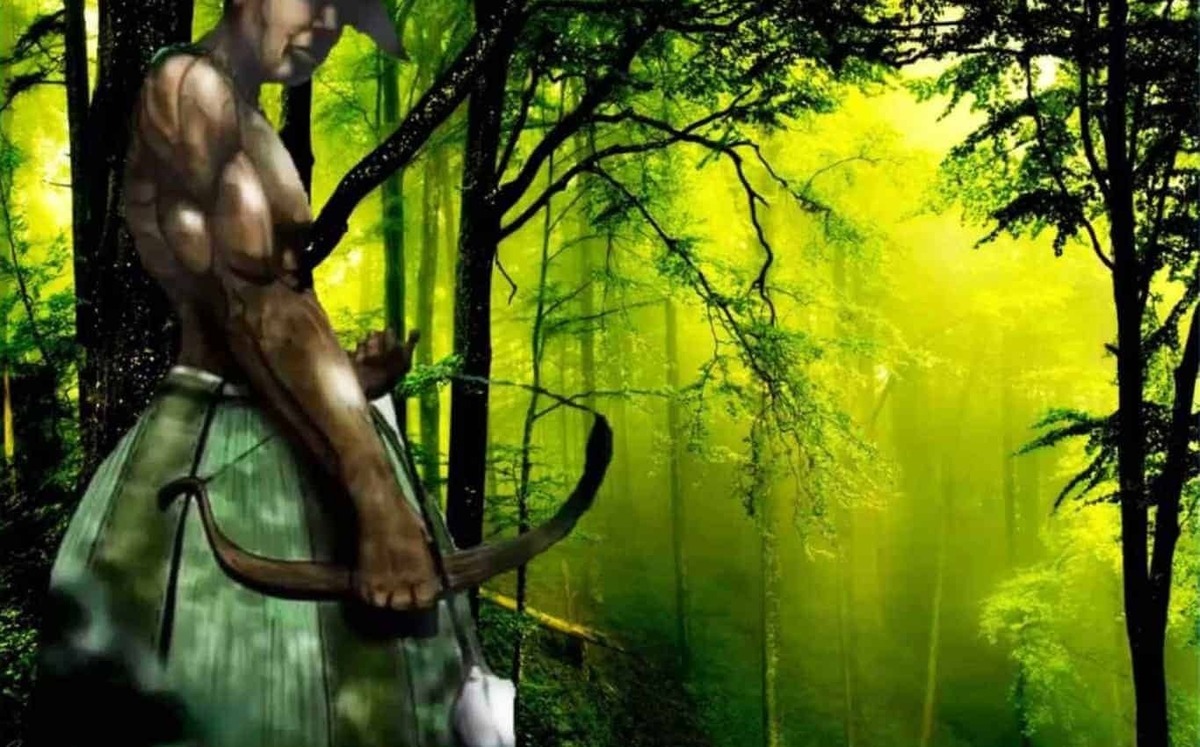
As with all other Orixás, there are specific characteristics of the sons and daughters of Oxóssi. Those who have a specific head Orixá, that is, the one that rules and guides the actions and behaviors in this incarnation, are called sons and daughters of Santo.
Known for being extremely intelligent, communicative, discreet and independent, the sons and daughters of Oxóssi have very clear characteristics. Get to know some of them.
Natural and fluid communication
The sons and daughters of Oxóssi have great facility to communicate, given their tendency to extroversion, when necessary or among people they trust. With an accessible language and great facility to adapt to the audience, they can pass the message adequately.
Besides adapting the tone and voice to the audience (whether in professional or personal situations), the sons and daughters of Oxóssi are able to have a greater fluidity between ideas, going through various themes with lightness and connecting different subjects easily.
Youthfulness and cleverness
Full of energy and disposition, ready for any activity at any time, the sons and daughters of Oxóssi are the joviality in person. They tend to have the appearance of a much younger person than they really are, usually being true surprises.
Another clear attribute is their ability to perceive dangerous situations, falsehoods or traps on their journey. With an agile mind, they can quickly process the clues they encounter and make quality and safe decisions.
Discretion and observation
Despite being extremely communicative, the children of Oxóssi are discreet people and do not like to attract attention. Unlike the children of Oxum, they do not like to be the center of attention and avoid crowds as much as possible, preferring to be among their own.
As good children of a hunter, they are also very observant and tend to pay attention to details that many times other people would miss. With that, they also tend to have a good memory, as they are really present in everyday situations.
Independence and detachment
The sons and daughters of Oxóssi are people who like to have their freedom respected, in any relationship sphere. This means that jealous and possessive people will never work out with them because they cannot stand to have their steps controlled.
Besides that, they are not very fond of excessive crudeness, being affectionate in their own way, usually more with gestures than with words. They also don't mind leading a nomadic life, traveling a lot and getting to know new cultures, without attachment to any place, person or situation.
Focus and silence
To have such a high level of observation ability, the sons and daughters of Oxóssi are able to have focus even in complex or distracting situations. This is because their ability to focus on just one thing helps them to have good results in this area.
Although they are communicative, jovial, like to travel and enjoy life, the children of Oxóssi also need their moment of tranquility. Silence works both as an escape valve and as a moment to recharge their energies, being fundamental in their lives.
To relate with Oxóssi
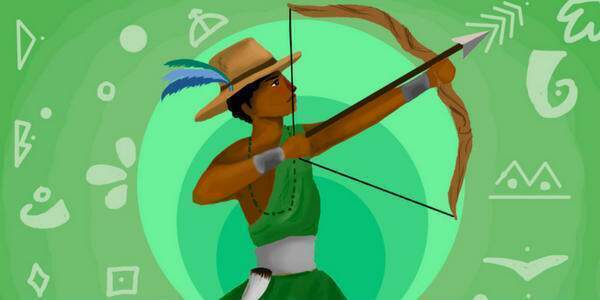
If you are a son or daughter of Oxóssi or simply want to learn how to relate to the archetype of the Orixá, it is important to know some essential points. Among them are the day of the year, day of the week and greetings to Oxóssi. See also what are his symbols, colors and elements.
Day of the year of Oxóssi
Oxóssi's day in Umbanda is January 20, synchronized with São Sebastião. It is the day when the saint's devotees and sons and daughters of Oxóssi celebrate the accomplishments and blessings received.
Oxóssi's day of the week
Oxóssi's day of the week is Thursday, where sons and daughters choose to wear clothing in the colors of their head Orixá or one of his qualities, as well as non-ritualistic beads.
Salutation to Oxóssi
The Salutation to the Orixá is done as a form of homage and respect to the entity, always related to his history and deeds. In the case of Oxóssi, his salutation is Òké Aro (Hail the great hunter) and also Arolé (Hail the king).
Oxóssi Symbol
The main symbols of Oxóssi are his bow and arrow, as well as the bodoque, which is an indigenous weapon that looks like the bow of arrows, but is used to shoot clay balls or rounded stones.
Colors of Oxóssi
The colors of Oxóssi can be light blue, sky blue, green, white and even gold, depending on the quality or even Nação of Candomblé, with small differences.
Element of Oxóssi
Oxóssi's main element is the earth, after all, he is the great hunter, who lives in the forests and knows the secrets of the sacred and non-sacred herbs. He is also very connected to Ossain, strengthening his bond with the earth element.
Prayer to Oxóssi
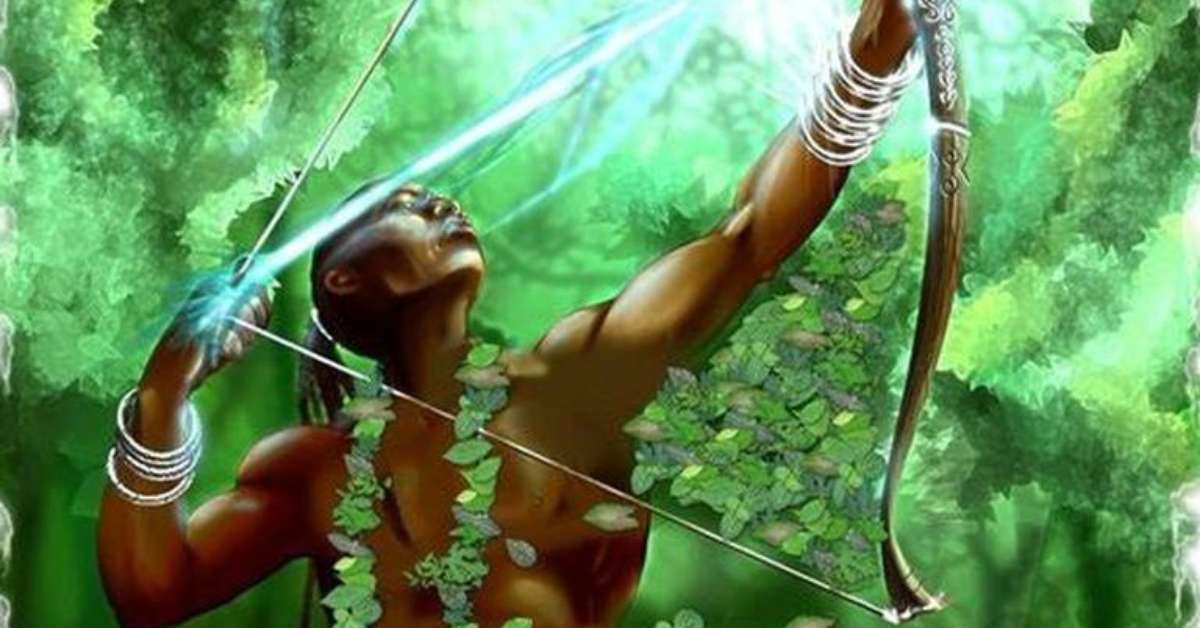
Oxóssi is a powerful Orixá and takes care of his children, protecting and guiding their paths, as do his brothers, Ogum and Exu. He also brings prosperity and many other blessings. Know his main prayers.
Oxóssi Prayer
If you need to open paths to prosperity in your life, hope for your days, peace, forgiveness and endurance, make this prayer to Oxóssi:
Glorious Odé, hunter of glories, the one who brings us prosperity, abundance, the daily bread, give us the certainty that in our daily lives your presence is a constant.
Knower of herbs and sacred leaves, I ask that you bring health to our sick, hope to our children, peace and tranquility to our elderly. Odé, calm our insults, our lamentations, give us strength to continue our journey, with resignation to accept all that we cannot change.
May his Company be kept in our daily path, may his arrow cut all evils and enemies, hidden and declared. May Oxalá cover us with peace, health, prosperity and union. Okê arô Oxóssi!
For protection
If at this moment in your life, you feel that you are in need of protection, you can pray a prayer to Oxóssi, the warrior of one arrow. These are excerpts of points, prayers sung accompanied by clapping hands and drums, for you to use in your prayers:
Oi don't move the sword of Ogum
Oi don't move the axe of Shango
Oi does not move the arrows of Oxóssi
Who in the woods is king, is a hunter.
Oxóssi is king of the macaia
Oxóssi is king on earth
When he comes from Aruanda
He comes to win demand.
Okê arô Oxóssi!
For prosperity and protection
When things are tough and you need to improve your life, choose this prayer in the form of snippets of points, to ask for help to the Orixá provider Oxóssi.
Red is the color of my father's blood
And green is the color of the woods where he lives
Let's saravar my father Oxóssi in our band
Let's saravar, the band he lives in
Oxóssi Odé, he is Saint Sebastian
But he reigns there in the woods and in the fields
He's the owner, of father Tupã's crop
To make your life better
And never lack what to eat
Light a candle for Oxóssi
And ask him to come to your aid
Okê arô Oxóssi!
Offerings to Oxóssi
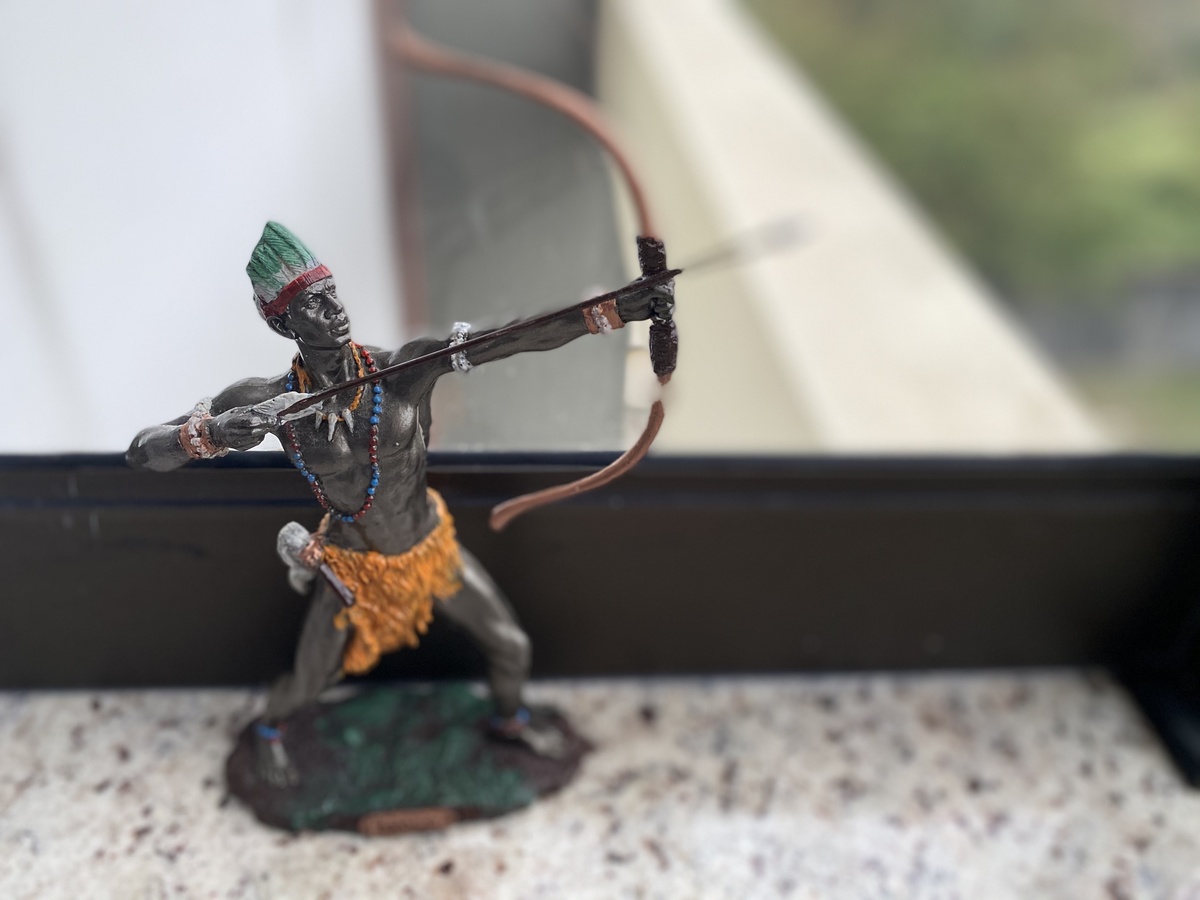
Offerings should only be made with the guidance of someone you trust and specifically for each case. In other words, you may even have some ideas here, but they should not be followed literally, and should first be reviewed by someone who knows your case directly.
However, in general lines, there are some small offerings that you can make to Oxóssi, as long as you know that this is not any kind of conclusive guidance but ideas of what can be done.
First of all, remember that Oxóssi does not like honey, animal head (even artificial representations) and Egg. See then what to do on the day of St. Sebastian, how to attract good luck and also an offering for prosperity.
Saint Sebastian Day
For January 20, which is the day of Oxóssi and San Sebastian, you can put on an altar, the image of the Saint or Orixá and put in front of him, a plate or bronze support, with ornamental feathers, flowers in bunches and coins properly cleaned.
Beside, a light blue or green candle, already cleaned with incense of sage or guinea and wrapped with essential oil of sandalwood. If you feel you must, ornament around the candle with cowries, coins or some green stone, such as emerald, green quartz, aventurine or jade. Light the candle, pray and let it burn.
For good luck
If you are in a phase in which a good dose of luck is needed, then choose the fifth day after the new moon and prepare a special offering to Oxóssi, preferably at the edge of a river, located in a place with woods (and safe, of course). It can certainly be done at home too.
On a suitable base, place a green candle in the center and around it, make a mandala with 7 coins, 14 sunflower petals and 21 rosemary leaves. Around it, make a garland with pitanga branches and light the candle, saying your favorite prayer and asking for good luck.
For prosperity
The prayer to Oxóssi, in order to attract prosperity, is very simple and effective. You need to write on a piece of paper what prosperity means to you, in detail. Right below, thank Oxóssi for his blessings and draw the bow and only one arrow.
With all care and safety, light a green or light blue candle and say your favorite prayer, asking for prosperity to Oxóssi. Take the paper and burn it in the flame of this candle, until there is nothing left, firming your intention even more. Thank him and continue working for what you want.
What is the sure message of Oxóssi, the hunter of one arrow?
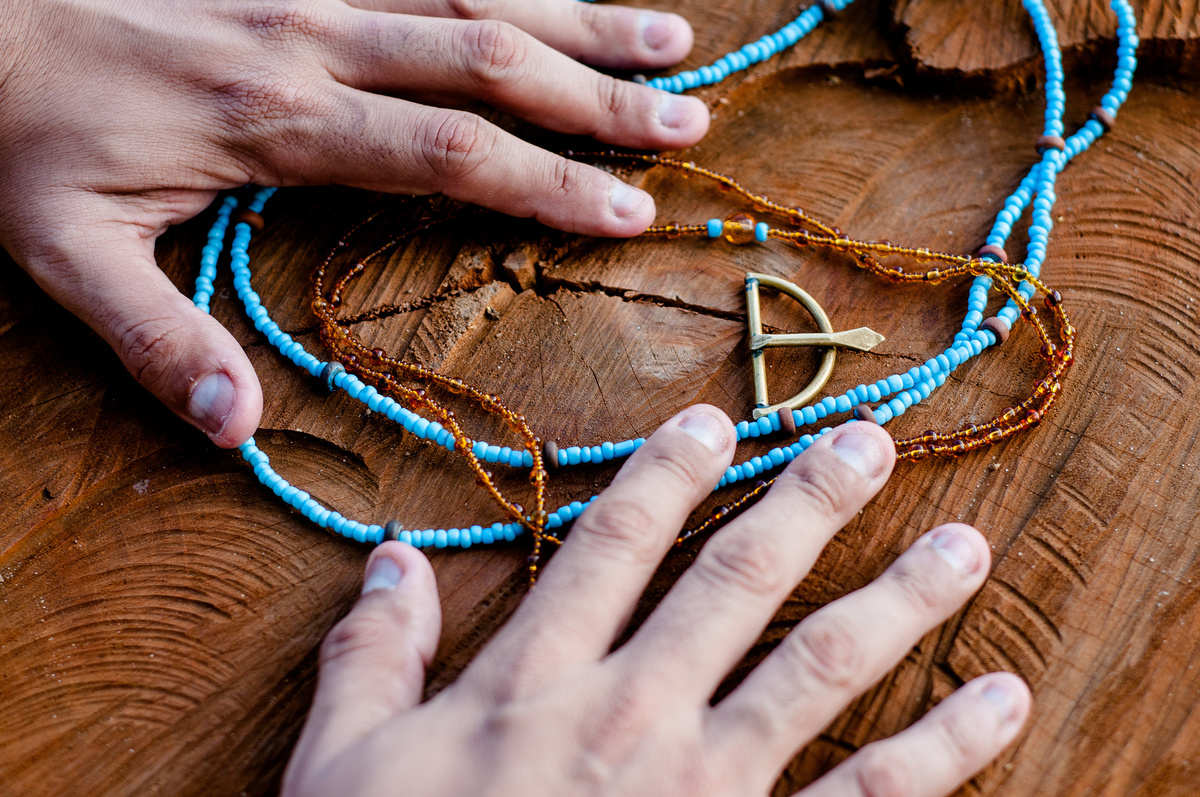
Fight for what you want and Oxóssi will help you. He is the patron of tireless workers, who use their sharp mind to find new paths and their attentive eyes to take advantage of the chances that life presents.
Do not lose focus on what is really important and especially, keep close those people who speak to your heart. Be free and liberate, share the prosperity received and enjoy the abundance in your life.

